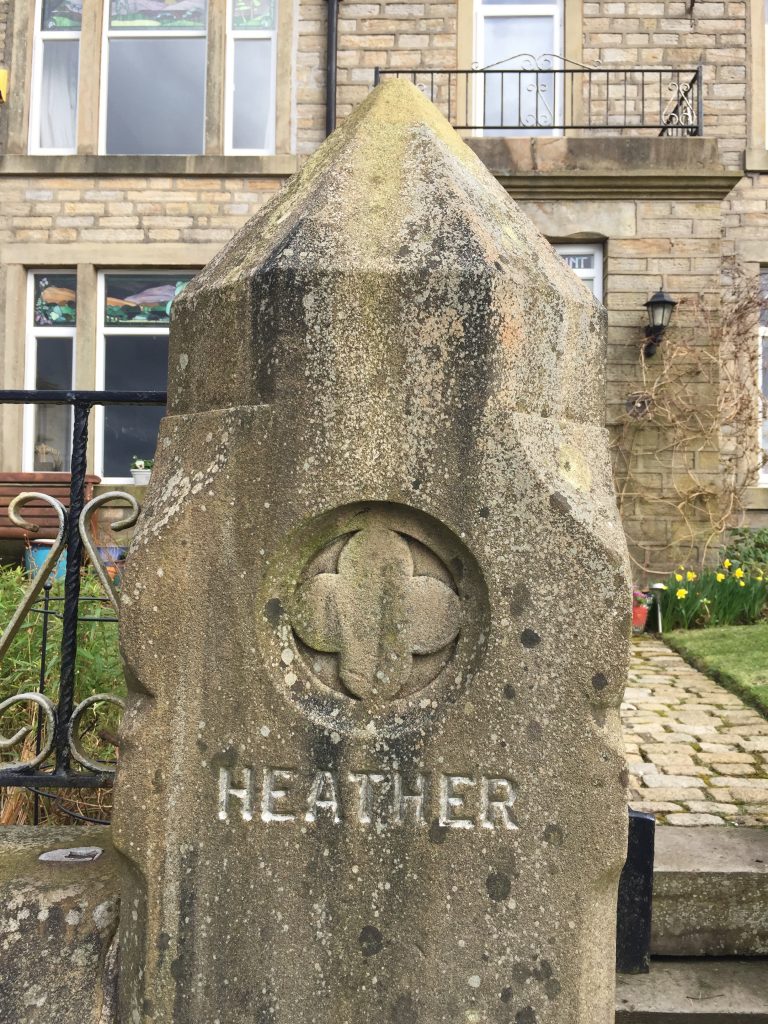
My Saturday plans had fallen through due to “social distancing” and so a friend had suggested a walk around Hollingworth Lake. However, the weather was a bit iffy – heavy clouds and intermittent rain, so we drove around the countryside, exploring no end of country lanes that petered out into footpaths or were barred, literally, by sturdy gates: a perfect Saturday afternoon in the countryside.
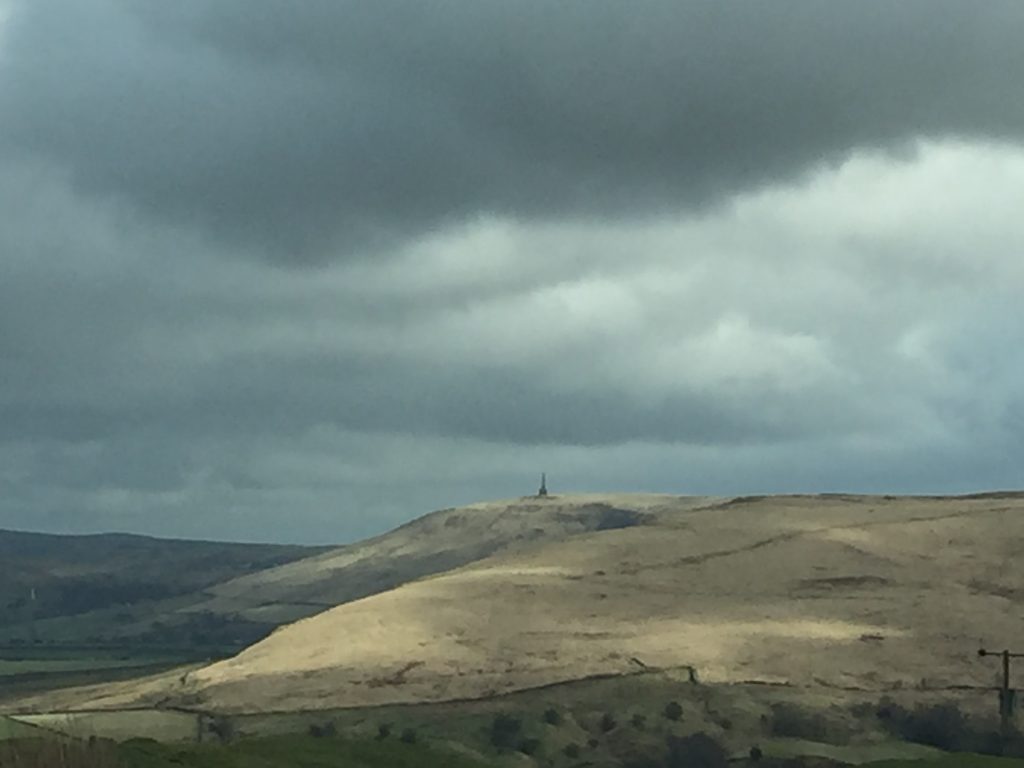
Out circuitous driving took us over the Pennines from Yorkshire into Lancashire. We spent some time in the Littleborough area where she had lived for a while, exploring the tiny hamlet of Whittaker with its lovely Heather Mount cottage.

I was surprised by the steepness of the single track lanes rising out of the valley, and several times we had to back a considerable distance in order to pass oncoming traffic. Another area new to me was Ealees. As we were driving around the Calderbrook area I suddenly recognised an ancient building on the roadside. It was built directly onto the road and was a long building adjoining a barn. It was named Handle Hall Inn, Calderbrook, although it’s now a private dwelling. Last year, as I was doing some ancestry research, I’d found an old photo of this place when it was still an inn, thanks to the Rochdale History Society Facebook page, and driving past it I’d recognised the building. We stopped so I could take a couple of photos but when I got home it took me a couple hours to find my family’s connection to the place. But what else was I to do on a Saturday night now that Match of the Day’s been cancelled for the foreseeable future.
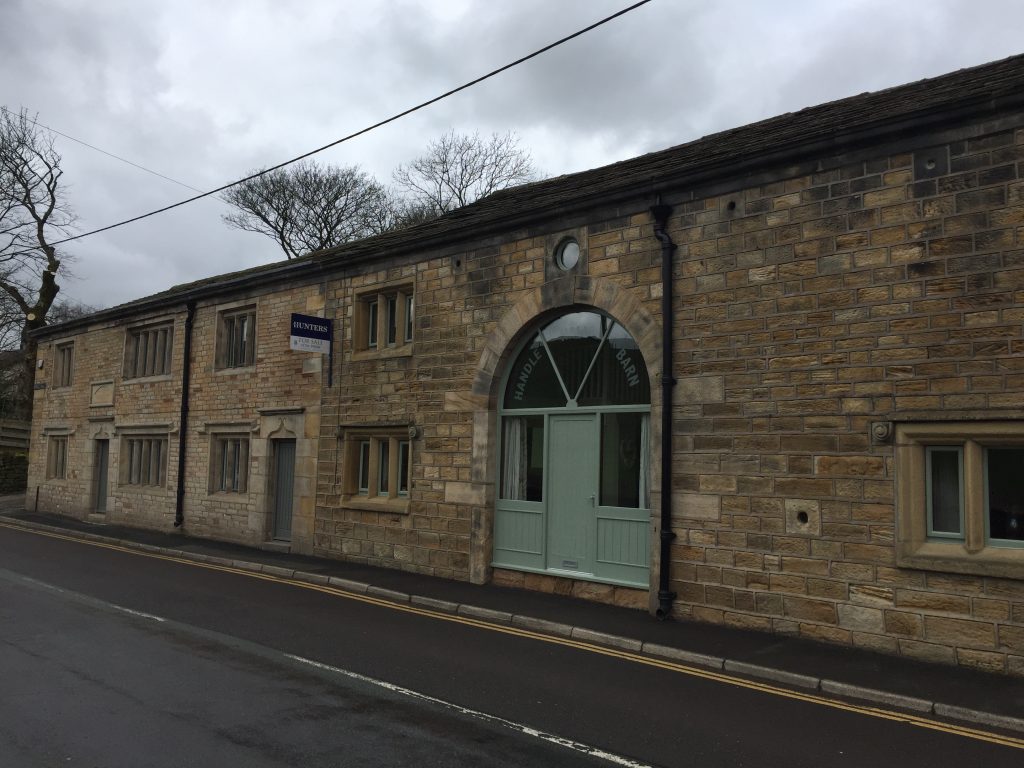
https://www.rightmove.co.uk/property-for-sale/property-75482089.html
We stopped to have lunch at Rebecca’s, a little cafe in the centre of Littleborough. I’ve walked along the canal through the town several times, and have stopped for a drink in The Wheatsheaf once while waiting for a train but I’ve never explored the little town, population 7500. It owes its origins to being at the junction of two ancient road over the Pennines, one being a Roman Road – Blackstone Edge. I have a very early memory of a drive out with my mum and dad along Blackstone Edge on a very foggy day. When they told me it was an old Roman Road I was quite scared because I expected to see a Roman centurion appearing out of the mist from the hillside. By the end of the Middle Ages Littleborough consisted of a church, a cluster of cottages and the primary occupation was hand loom weaving and sheep farming. Merchants passed through the town on their way to markets in Halifax and Rochdale. It’s interesting that the Wrigley part of my family, my gt gt gt gt grandfather, James Wrigley, moved from Rochdale to Heptonstall between 1809 and 1811. During the industrial revolution cotton became the major industry and mills, houses for the workers and mansions for the mill owners appeared both in the town and in the surrounding hills and hamlets. In 1804 the Rochdale Canal over the Pennines was finished, necessitating a tunnel over ‘Summit.’ The first time I walked the tow path of the canal over the summit, April 2018, I thought I was going to have to walk through a tunnel! Hollingworth Lake was built to provide a steady water supply for the canal. It was one of my mum’s favourite trips out after she moved to Tottington and she took my family there on one of our visits to England. In 1841 the Manchester and Leeds railway followed a similar route to the canal, and also necessitated a long summit tunnel. There is a ruined mill on the canal bank which always attracts my attention when I walk the tow path, and a beautiful old hall, still lived in is close by.
HENRY REDMAN
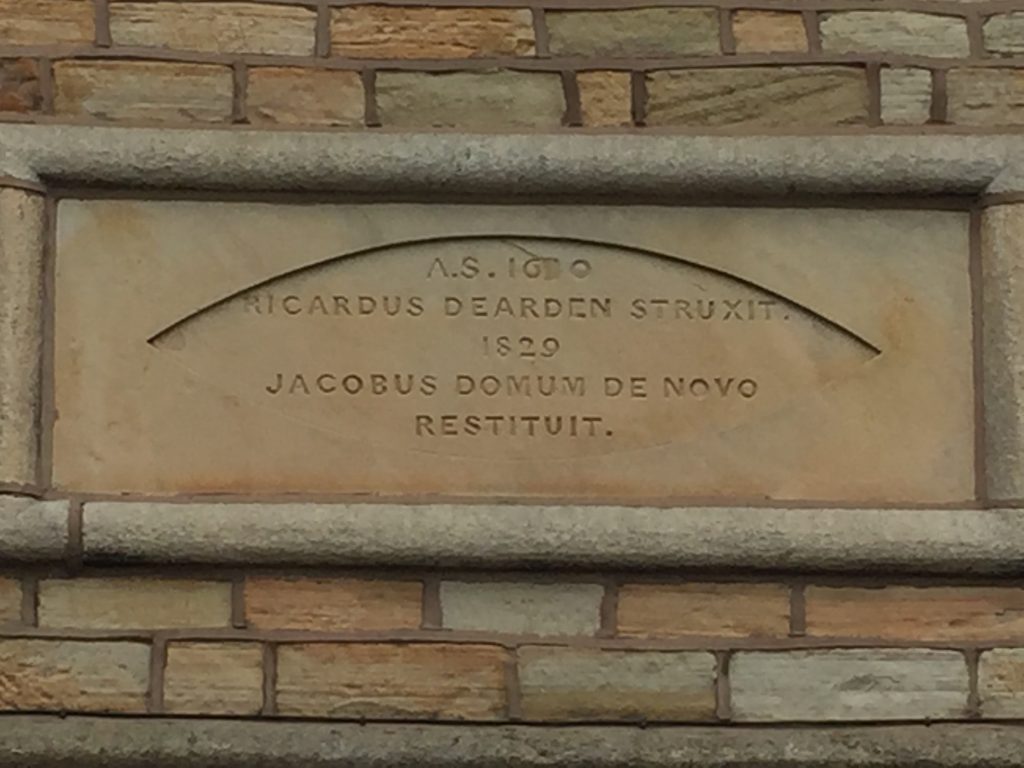
Henry was baptised at Heptonstall church on Christmas day, 1836. His parents were William and Mary. Along with Henry, who was born on Aug 12, 1806, his two siblings were also baptised, Richard, who had been born on April 16, 1809 and Elizabeth, who had been born on April 27, 1816. It wasn’t particularly unusual for several siblings to be baptised on the same day, but what is unusual was for them to be so old: Henry was 30 years old.
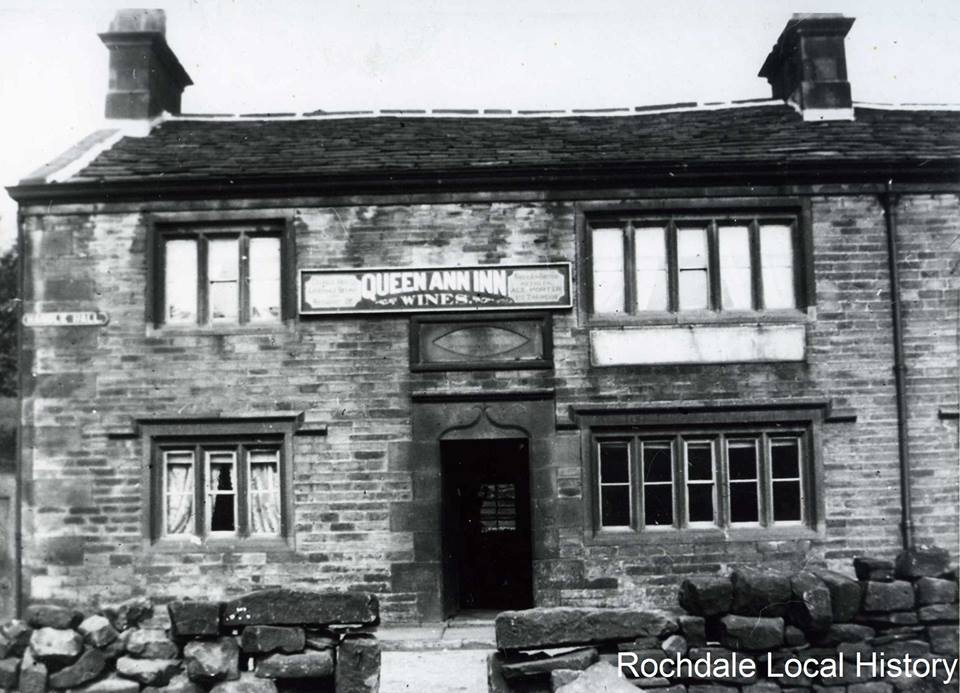
If I hadn’t seen a facsimile of the actual church record on Ancestry.com I wouldn’t have believed it! In fact it would seem that henry was already married before he was baptised since his children were Elizabeth (1834-1897-, John (1838-1881) and Sarah Ann (1841-1881). William was born 1843 and Hamlet in 1847.

In the 1841 census the family are living at Back Lane Heptonstall where Henry is a reed maker. A reed, in weaving terms, is rather like a comb and is used to push the weft yarn into place once the shuttle has pulled it through the warp threads on the loom. This would tie in nicely with Heptonstall being a village of handloom weavers at this time. Also living with them is Richard Redman, aged 25, a tin plate worker, someone who made or repaired tinware.
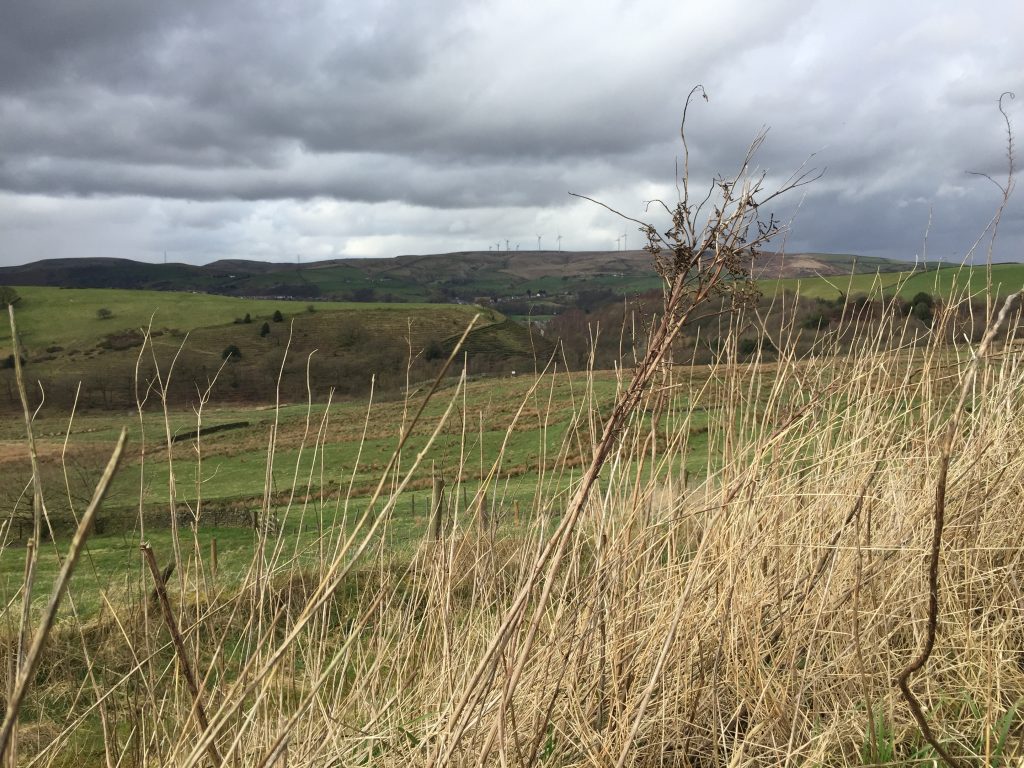
The 1851 census has the family living at, yes, Lily Hall, where Henry is still a reed maker, and now also a farmer of 7 acres. but by 1851 the Wrigleys, the Farrars and the Whithams, all ancestors of mine are no longer living at Lily Hall. In a newspaper of 1855 I found: License of the White Hart, Soyland, transferred from Mr.John Bell to Mr.Henry Redman of Heptonstall. License of the Black Bull, Heptonstall, transferred from Mr.Henry Redman to Mr.George Greenwood. (Halifax Courier, 12th May 1855).
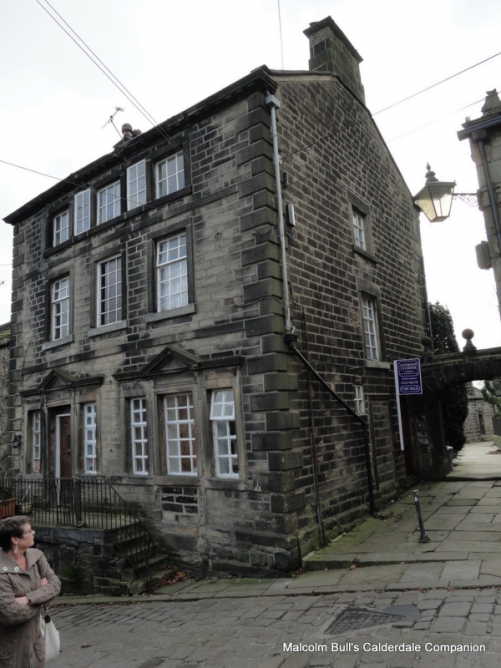
This seems to imply that Henry gave up the Black Bull at Heptonstall and took over the White Hart in Soyland. On July 22, 1854 Henry’s daughter, Elizabeth had married George Greenwood, a painter from Heptonstall so it would appear that Henry signed the Black Bull over to his son-in-law, and he moved to Soyland. Both pubs are now private residences. The White Hart closed in the 1990s. The Black Bull closed in the 1920s though it was used as a working men’s club until 1972.
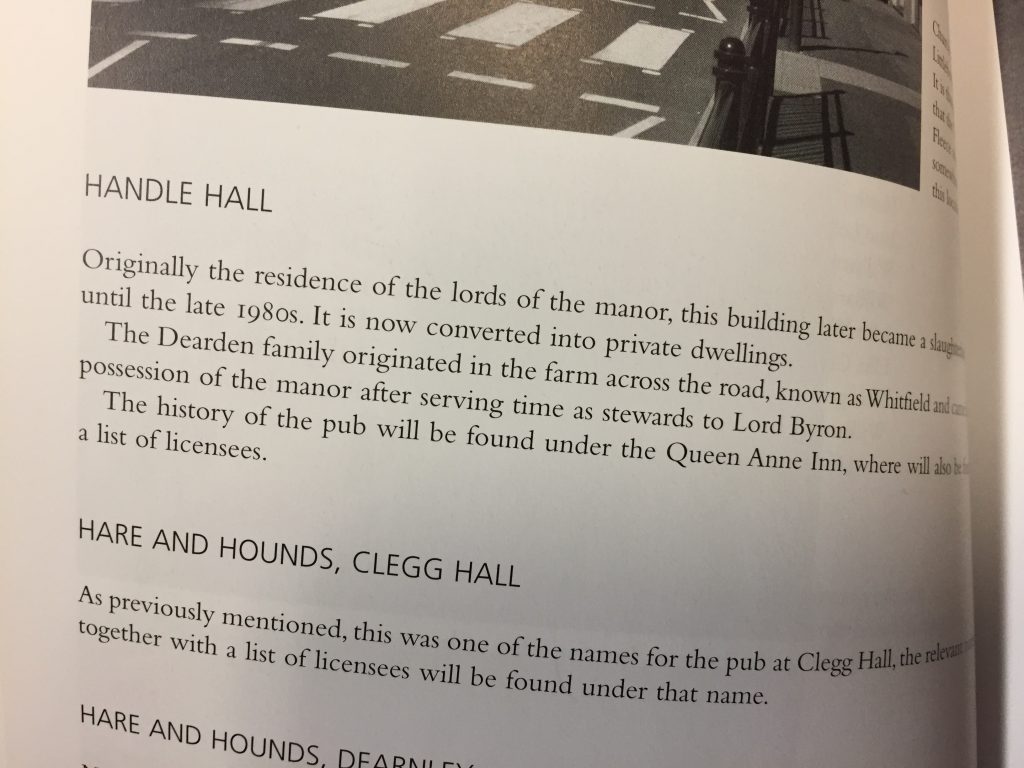
The next time I find Henry is as the landlord of the Handle Hall inn in Calderbrook, Littleborough, the building I recognised on my drive yesterday. Apart from Elizabeth, who is now running the Black Bull, his wife and all his children remain with him. In the listed building register it is described thus: The rebuilding of a house of 1610, with the barn added in the 1840s, they are in stone with a stone-slate roof. The house has quoins and eaves, cornice, two storeys and three bays. There are two doorways with ogee-headed lintels and hood moulds and the windows are mullioned, those in the ground floor with hood moulds. Above a door is an inscribed and dated plaque. The barn to the right has a round-arch wagon entrance and round windows. I’d contacted a Facebook page about Rochdale pubs past and present in December of last year and I’d had 18 responses, one of which gave me a link to a study that Rochdale Local Studies group had done on the pub complete with photos, a map and general information. Someone even responded that their gt gt gt grandparents had kept the pub. Henry lists his occupation as farmer and innkeeper but by 1871 he is a retired farmer living at #4, Wilderness. this presented me with an interesting problem: Where is ‘Wilderness’? Again Facebook to the rescue: Wilderness was an area of Summit Littleborough around the Royal Oak (later The Huntsman Inn) on Todmorden Rd. Henry Redman was the licensee of The Queen Anne Inn between 1858 and 1861. OK the dates aren’t quite accurate but now I know where Wilderness is.
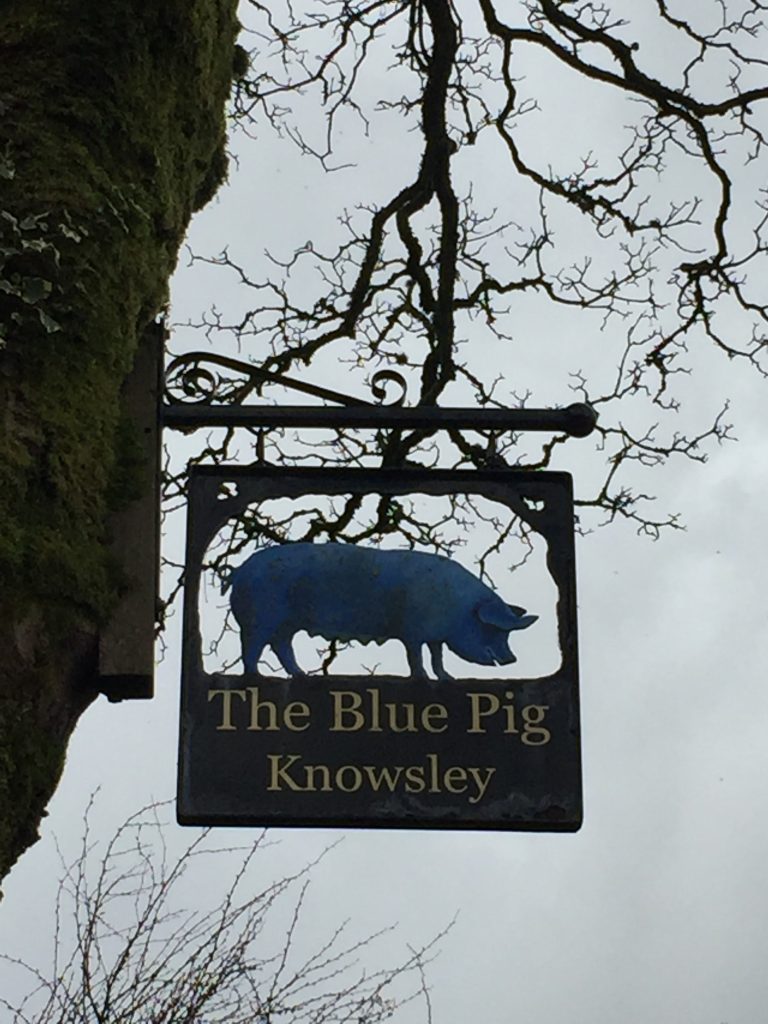
Another responder also goes on to say: Just had a look on Google Earth to see if any of the terraces at Summit have Wilderness on them but no luck. So it would appear that there are some terraces near the Summit which Henry and Ann lived in but 1881 find them in Maden’s Square, right in the centre of Littleborough. No doubt life at the summit was difficult for a couple now in their mid 70’s. Henry died in 1884 and was buried at Heptonstall church on March 10th.
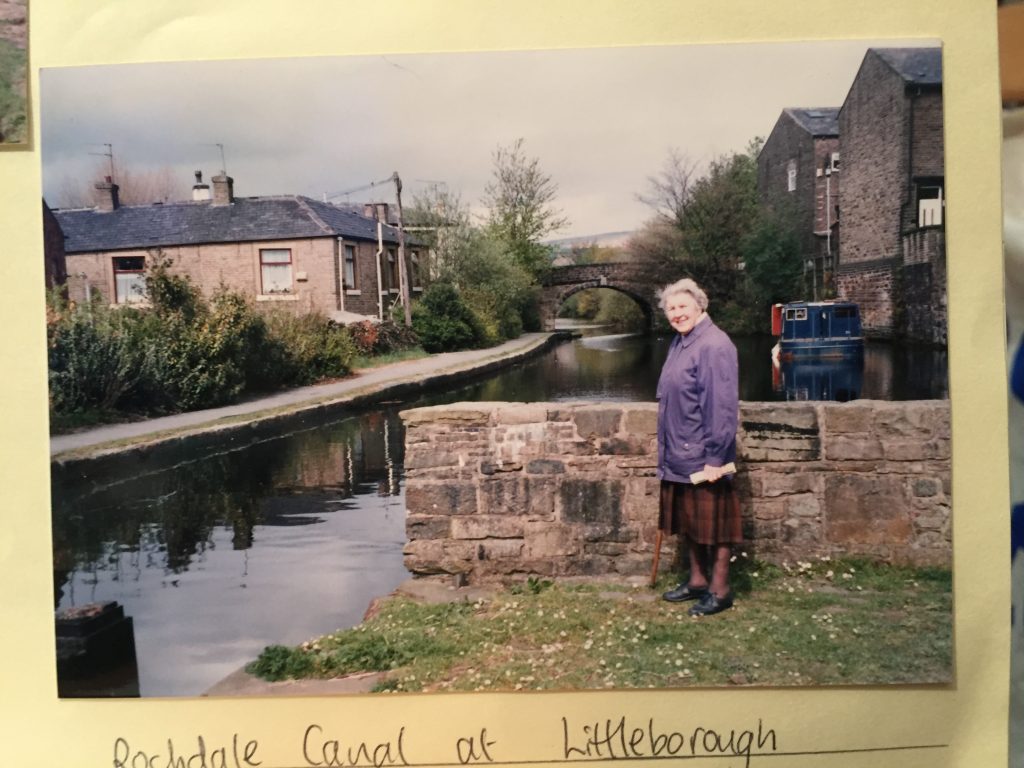
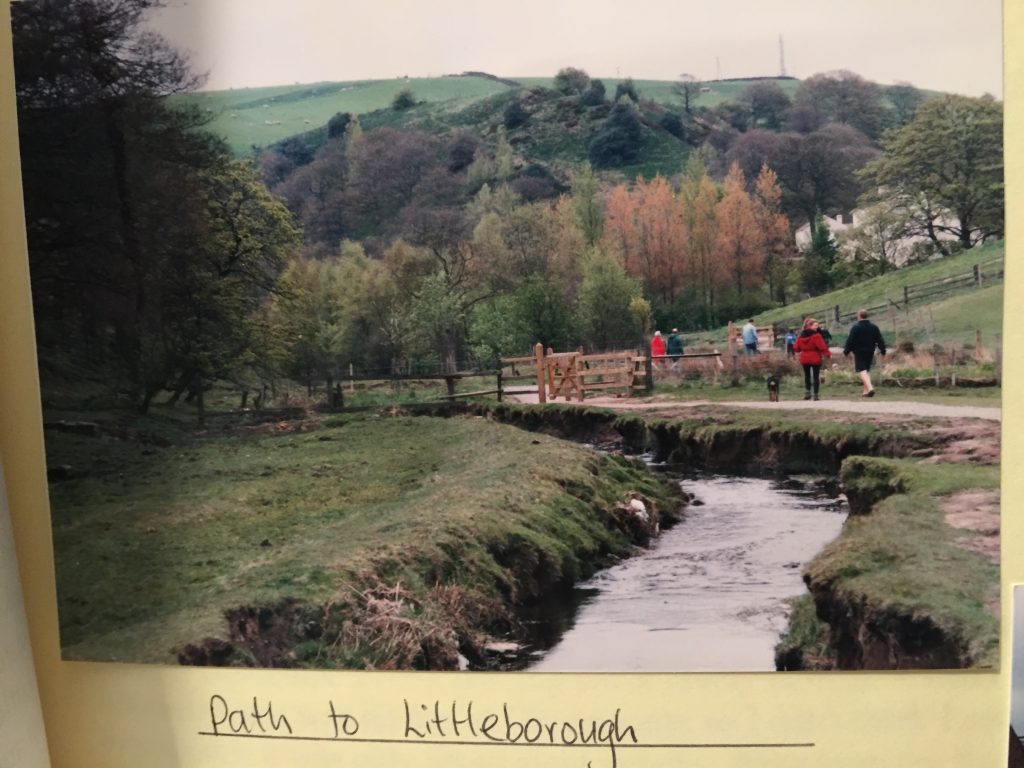
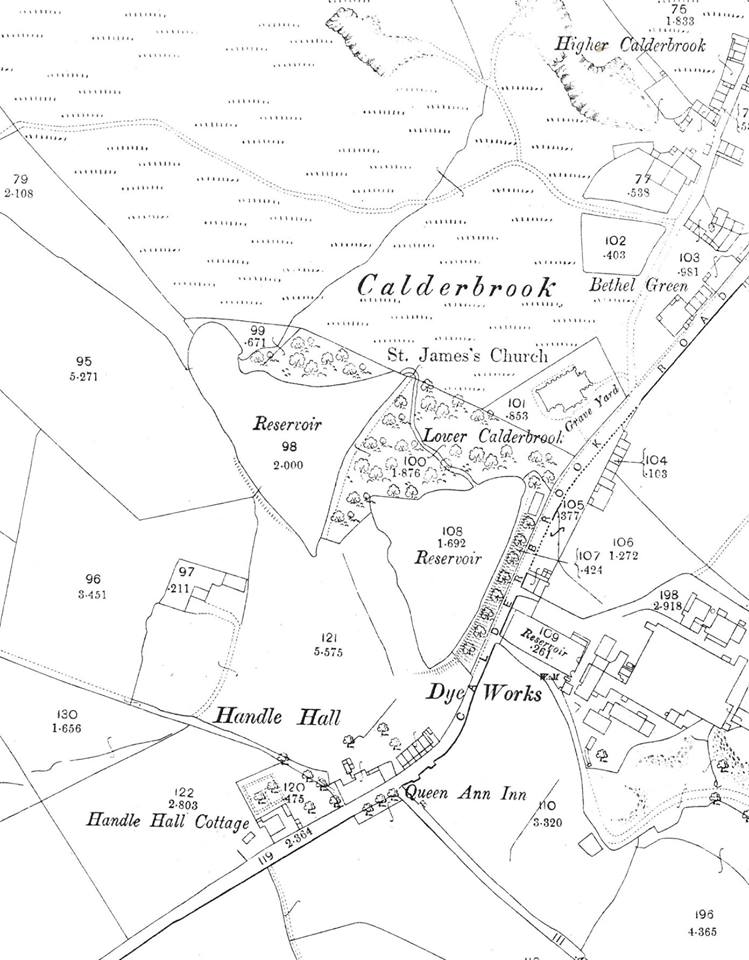
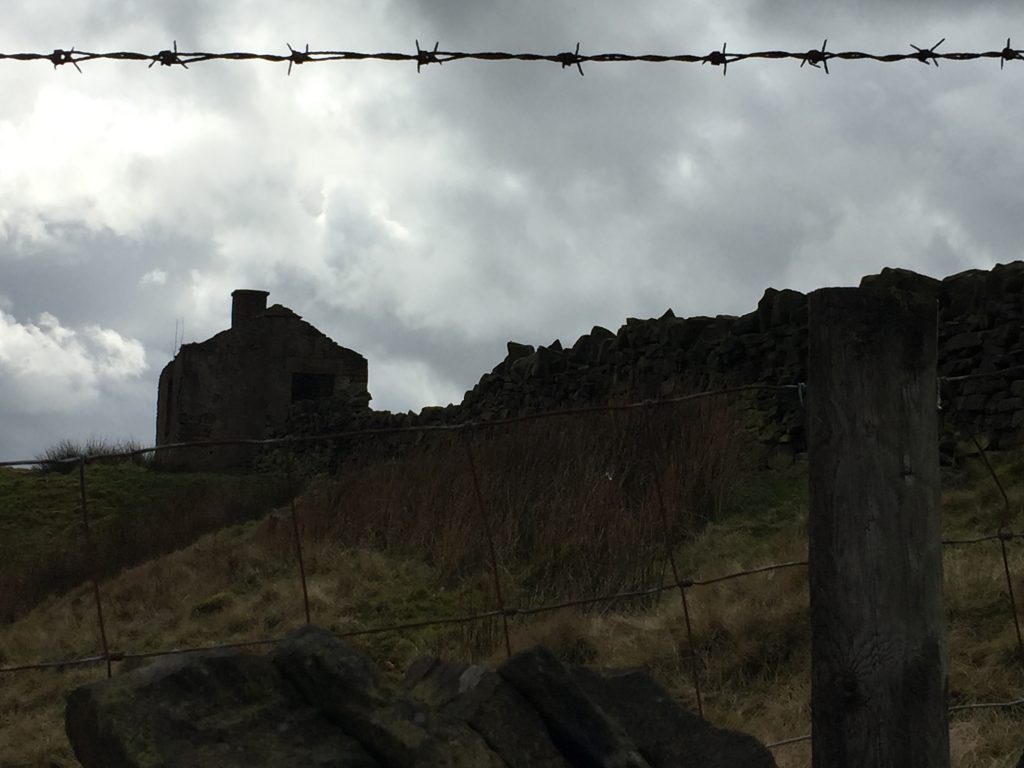
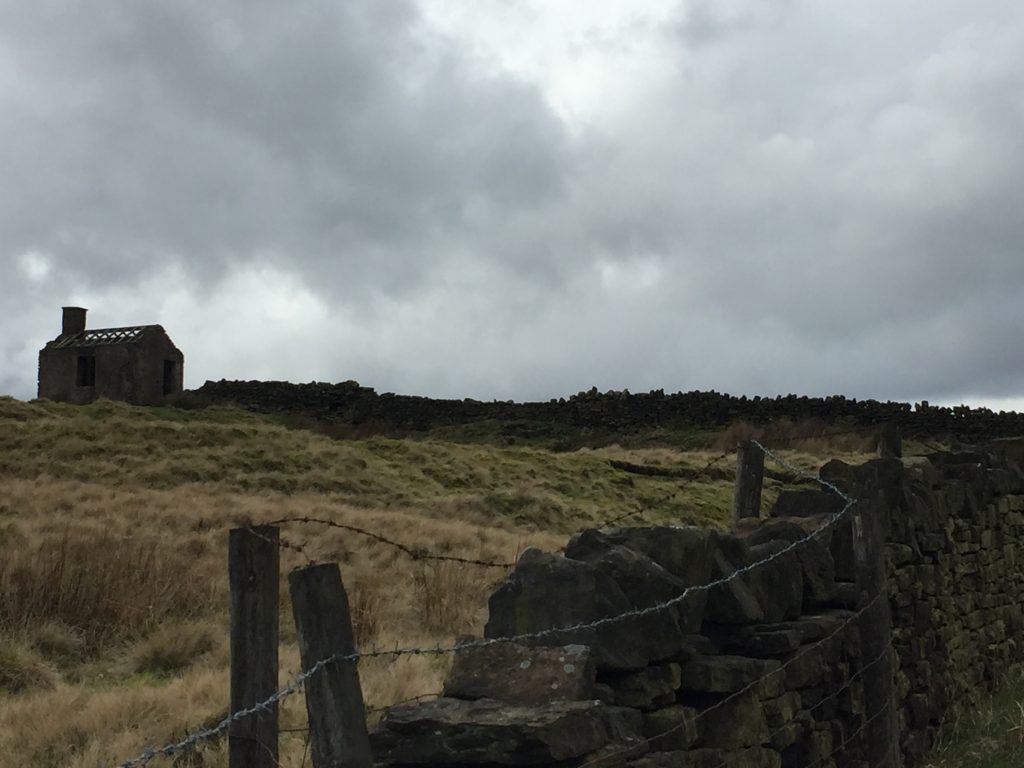
Leave a Reply